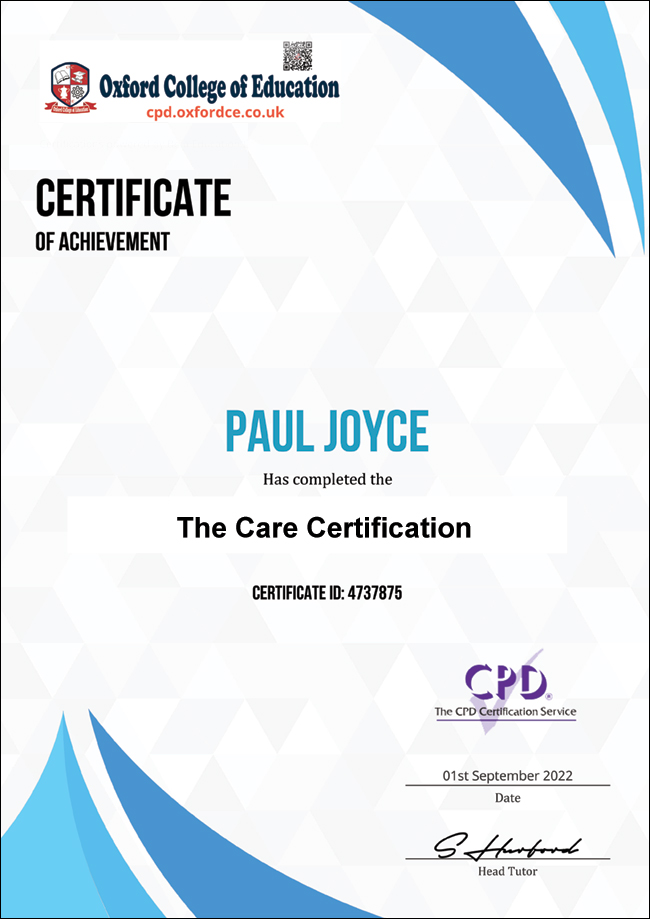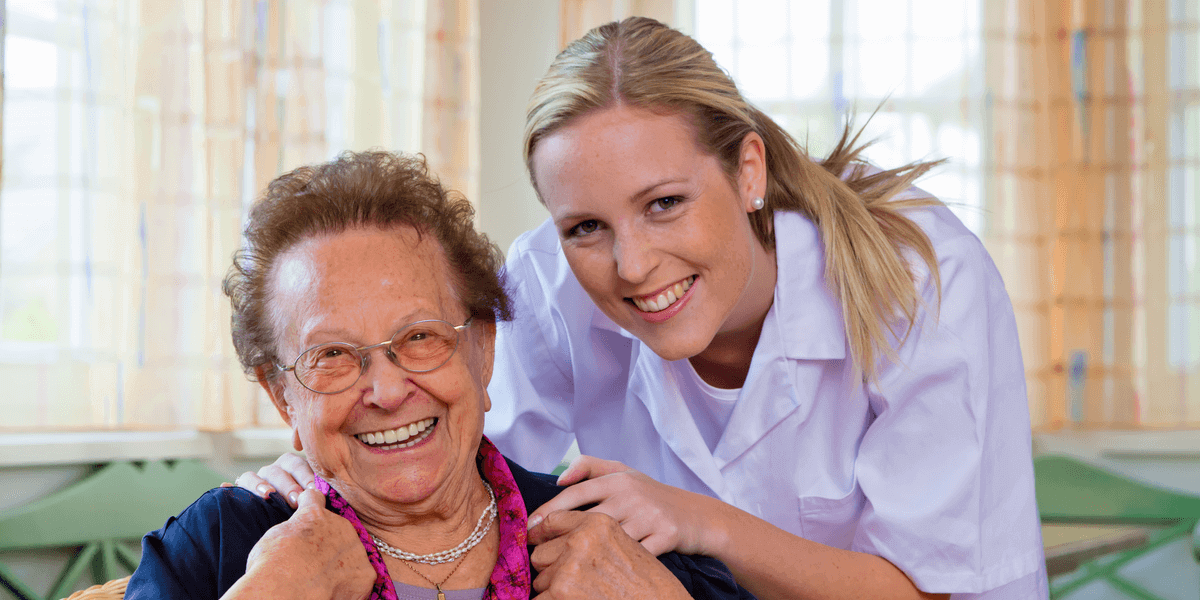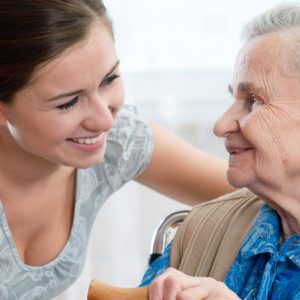The Care Certification
The Care Certification is an identified set of standards that health and social care workers should strive to adhere to in their daily life. It was developed so that all workers obtain the same introductory skills and knowledge to enable them to provide compassionate, safe, and high-quality care and support.
Care Certification training is an essential part of any health or social care role. This course is appropriate for anyone new to the industry, currently employed as an adult social care worker or someone who provides direct care in a residential home, nursing home, hospice or in the patient’s own home.
It includes information about typical duties, personal development and working in a person-centred way, along with other systems for managing your ability to provide the best possible care across the fifteen modules.
You will Learn:
- What is meant by duty of care, the importance of effective communication and the responsibilities surrounding safeguarding both adults and children
- Information about discrimination and equality, including the protected characteristics
- Privacy and dignity preservation, including information regarding confidentiality, handling sensitive information and the UK GDPR principles
- Food safety regulations and the importance of good nutrition and hydration
- Information about common mental health conditions, dementia, learning disabilities and how to determine mental capacity
- Basic life support and Health and Safety standards
Benefits of Taking this Course:
- Develop your skills as a health or social care worker
- Gain an insight into what it takes to deliver the best possible care
- Open the door to furthering your education
Who Should Take The Care Certificate Online Course?
Care Certificate is ideal for individuals who are working or want to work:
- Healthcare Assistant
- Support worker
- Paediatric Nurse
- Child Support Worker
- Child & Adolescent Psychologist
- Foster Care Worker
- Nurses and Junior Doctors may refresh their knowledge
Course Modules/Lessons:
- The typical duties that will be reqired of your role, and what you need to personally bring in terms of your attitude, demeanour and behaviour
- The definition of company values, aims and objectives
- Information regarding yor rights at work, including health and safety, working conditions, agreed ways of working, reporting errors and whistleblowing
- What a Personal Development Plan (PDP) is and what should be included in it
- How to make SMART goals and objectives
- The difference between supervisions and appraisals, and the core skills needed for you to succeed in your role
- What is meant by duty of care, what your responsibilities are to upholding it, and who you have duty of care to
- Ways to promote wellbeing and support the independence of those you work with
- How to best deal with complaints, conflicts, incidents and near misses, and the legislation that sets out the regulations for such events
- Ways to improve your attitude towards equality and diversity and what to do if you witness an act of discrimination
- What is meant by ‘person-centred working’ and the core values that go alongside this, including “The 6 Cs” and these values in practice.
- Information regarding care plans and why these are so important in providing optimum levels of care and support
- Ways in which to avoid distress and environmental factors that can cause discomfort to residents and patients
- Why communication is essential in the healthcare sector
- The various types of communication and how the nonverbal types can be indicative of emotions and feelings
- The difference between informal and formal communication and the situations where each of these is appropriate
- Some of the barriers that prevent good communication and how you can reduce these
- The meaning of the term ‘privacy’ and ‘dignity’ and how these can be preserved
- The regulations surrounding the privacy of information and confidentiality, and ways in which you can ensure these are followed
- How privacy and dignity can be maintained in health and social care, and the role that wellbeing has on this
- What a risk assessment is, and what it should consist of
- Information about dementia and learning disabilities
- The importance of early diagnoses
- How to determine mental capacity, and the legislation surrounding mental health, dementia and learning disabilities
- Information about common mental health conditions such as depression, anxiety and psychosis, and the signs and symptoms of these
- Information about dementia and learning disabilities
- The importance of early diagnoses
- How to determine mental capacity, and the legislation surrounding mental health, dementia and learning disabilities
- The 10 different types of abuse and the signs and indicators of these
- The principles of safeguarding and risk enablement
- SARs and what to do if you suspect abuse is occurring or will occur in the near future
- The various forms of child abuse, and the common signs and indicators to look out for in order to be able to recognise them
- Children’s rights, and the legislation surrounding this
- Your responsibilities in safeguarding children, and information on what to do when you suspect abuse is occurring
- The three elements of basic life support, including the primary survey, airway maintenance and CPR
- The acronym DR ABCD and what each step should entail
- Information about the proper administration of CPR
- How to deal with an obstruction to the airway in adults, and how this differs from what you need to do for an infant or a child
- Who is responsible for ensuring safety in the workplace
- How to deal with first aid situations, accidents and sudden illness
- Tasks that may require specialised training
- How the standards of ensuring good health and safety can lead to stress – as well as how you can deal with stress to promote a healthy, error-free workplace
- Where, when, and how you should handle private information in the workplace
- How to tell what to share and record, by considering the Six Principles of UK GDPR
- What pathogens are and how infections are caused
- The ‘Chain of Infection’ by which pathogens are transmitted
- The preventative measures you can take to break the chain










